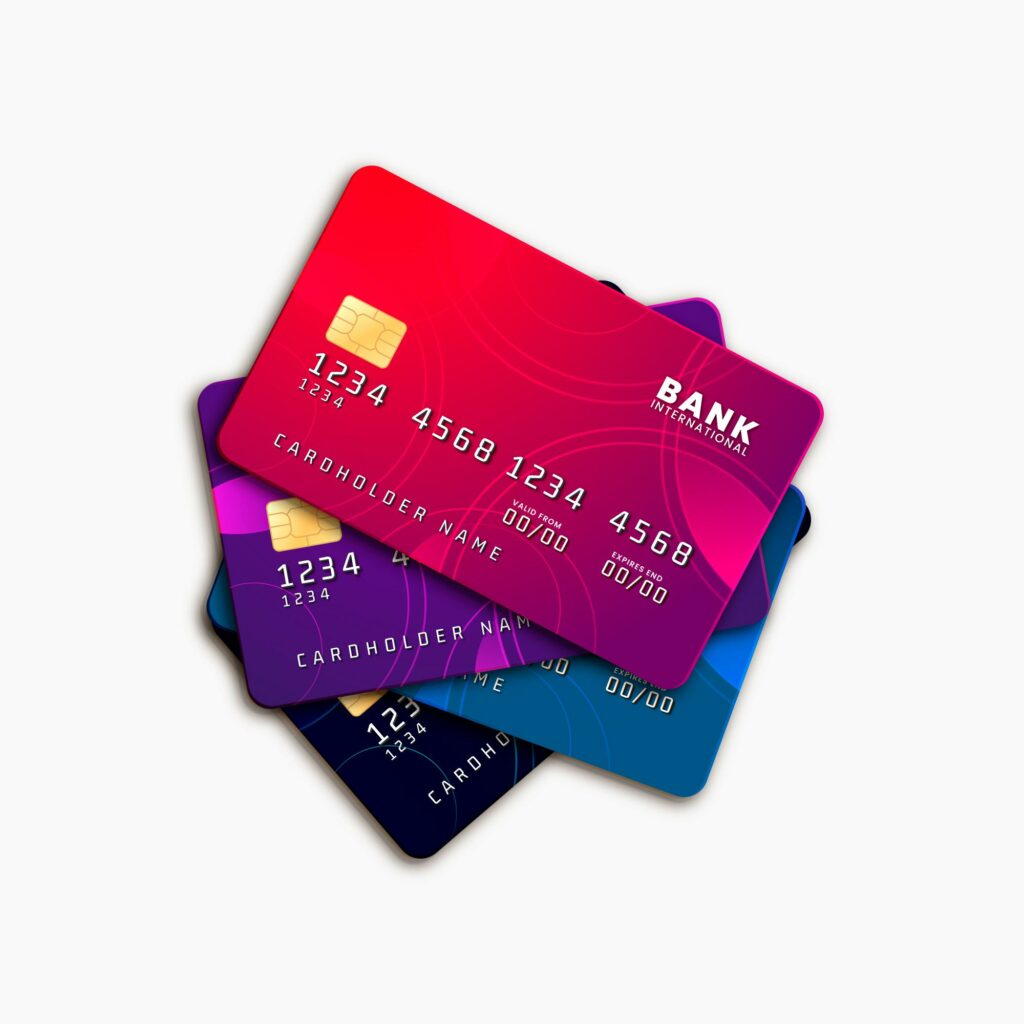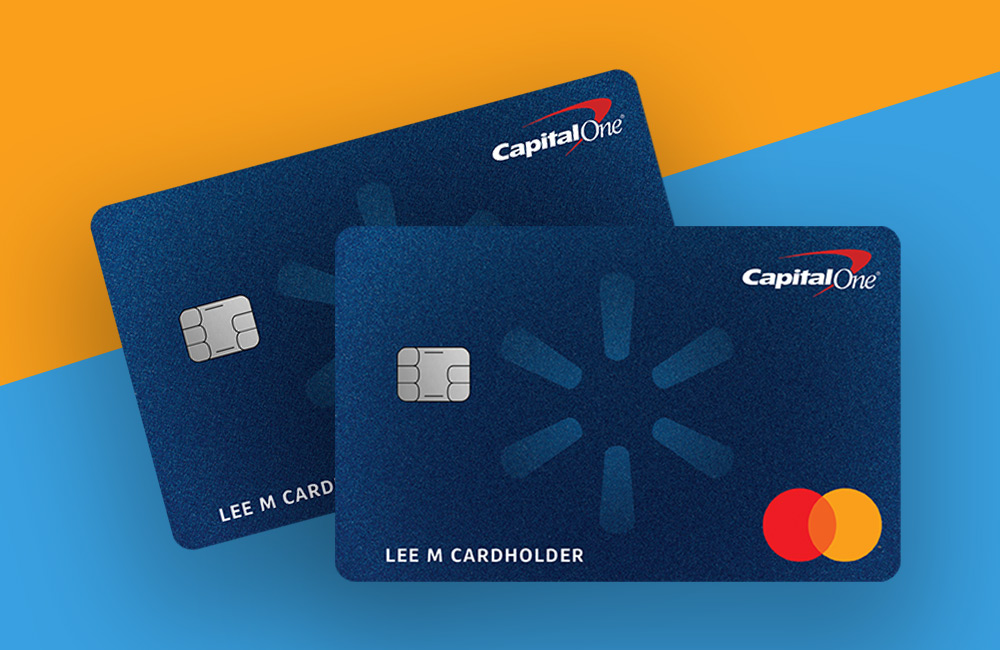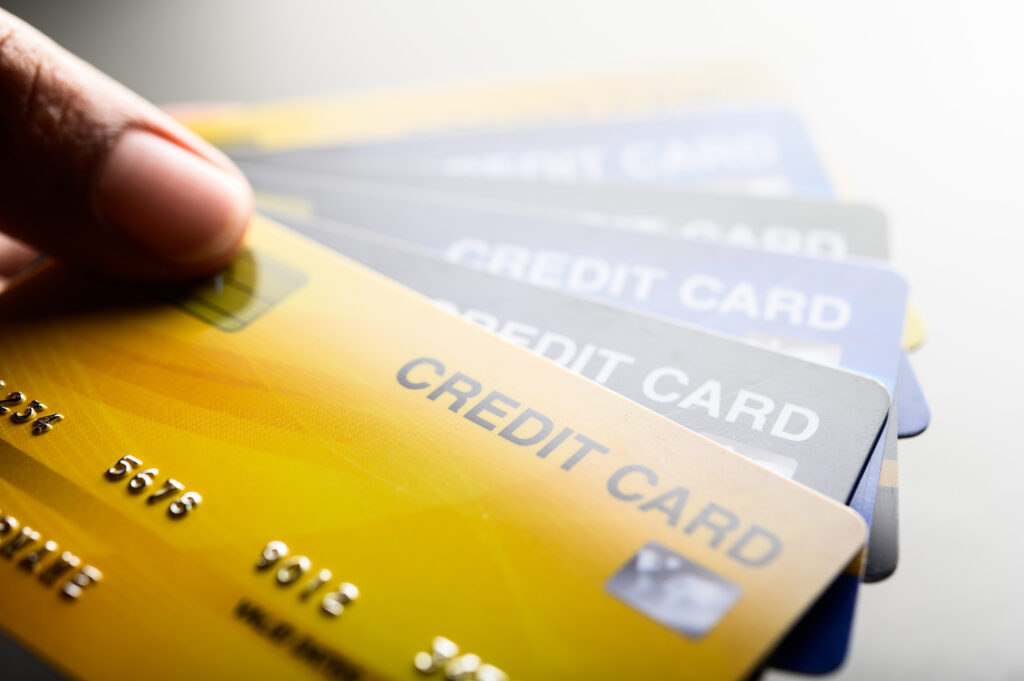
A standard credit card, in its most basic form, is a tool that allows you to borrow money up to a specified limit, which you can use for purchases, whether that’s groceries, gas, or a night out. Think of it as a short-term loan you can have access to whenever you need it. Each month, you repay a part or all of what you’ve spent.
The beauty of these cards lies in how easy to use they are, making them a common form of payment. By understanding and using them responsibly, a standard credit card can be both a great tool to use to build your credit score up!
What is The Difference Between a “Standard Card” and Normal Everyday Credit Cards?
While the term “standard credit card” might sound ordinary, it basically refers to the most basic form of credit card without the common rewards and benefits you hear about on many advertisements. In contrast, the credit cards we frequently hear about in commercials or see advertised online often come packed with features, such as cashback incentives, travel rewards, or introductory interest rates.
These other types of credit cards, whether they’re travel, rewards, or balance transfer cards, are designed to cater to specific spending habits or financial needs. While a standard credit card ONLY offers the foundational credit function, allowing you to borrow and repay funds.
Standard (no-reward) credit cards are actually pretty rare nowadays. Seriously, try googling non-rewards credit cards and finding one that offers 0 rewards. As the credit card market has become very competitive nowadays, every issuer has to one up the other by offering enticing rewards. Today’s “standard credit card” is typically a very basic cashback program such as the Discover It card.
Key Features of Standard Credit Cards
Credit Limits and Their Determination
A standard credit card comes with a credit limit, which is the maximum amount you can owe the credit card issuer at any given time. It’s important to understand how this limit is set:
- Creditworthiness: The card issuer will assess your “creditworthiness”, often by reviewing your credit report and score. This evaluation gives them insight into your financial behavior and how likely you are to repay borrowed amounts.
- Income Level: Issuers might ask about your annual income to gauge your ability to pay back debt. A higher income could potentially lead to a higher credit limit.
- Existing Debt: If you have significant existing debt, issuers might be hesitant to offer you a high credit limit, fearing overextension.
Common Interest Rates and Grace Periods
Standard credit cards typically come with an APR (Annual Percentage Rate), which is the interest charged on outstanding balances. Several points to note include:
- Variable APR: Many credit cards feature a variable APR, meaning the rate can change based on the benchmark interest rate (often the U.S. Prime Rate).
- Grace Period: This is the time between the end of a billing cycle and the due date for that billing cycle. If you pay off your full balance within this period, typically around 21-25 days, you won’t be charged any interest.
- Penalty APR: If you miss a payment or go over your credit limit, some cards might increase your APR as a penalty. It’s typically higher than the standard APR and can apply indefinitely.
Basic Reward Structures
As we said, standard credit cards are more basic than their rewards-heavy counterparts, most still offer limited rewards:
- Cash Back: Some standard cards offer a flat cash-back rate on all purchases. Instead of tiered or category-specific rewards, you might get, for example, 1% back on all spending.
- Introductory Offers: Occasionally, even basic cards might come with introductory offers, like a low or 0% APR for a specific period after account opening.
- Miscellaneous Perks: Other perks can include discounts at specific retailers or basic purchase protection.
While standard credit cards might lack the big rewards and perks of premium cards, they fill the need for those looking for simplicity or establishing credit history. They offer a straightforward way to manage finances without the complexity of extensive rewards programs.
Benefits of Using a Standard Credit Card

Building Credit History
One of the biggest reasons people open up a standard credit card is to build or rebuild their credit history. Each time you use the card and then responsibly pay off the balance, you’re demonstrating financial reliability. Consistent, timely payments are reported to credit bureaus, positively affecting your credit score. This history is crucial when seeking larger loans, like mortgages.
Convenience of Cashless Transactions:
In our modern era, carrying cash can sometimes be more of a burden than a benefit. With a standard credit card:
- Universal Acceptance: Whether you’re shopping online, booking a hotel, or dining out, credit cards are widely accepted both domestically and internationally.
- Ease of Tracking: Monthly statements provide a clear record of your expenses, making budgeting and financial tracking more straightforward.
- Safety: In the event of loss or theft, cards can be quickly frozen or replaced, reducing the risk of financial loss compared to lost cash.
Potential for Minimal or No Annual Fees
One standout feature of many standard credit cards is the absence of annual fees or, if they do exist, they’re relatively low. This contrasts with premium or specialized cards, which might offer great rewards but at the cost of an annual fee. For those who prefer simplicity and cost-saving, a standard card can be a right choice.
Common Misconceptions About Standard Credit Cards
Like anything in the world, the standard credit card also comes with its share of misconceptions:
Myth 1: Standard Cards Don’t Offer Any Rewards:
While it’s true that standard credit cards are often more basic in their offerings compared to premium or specialized cards, it doesn’t mean they come without any perks. Some standard cards do offer cash back, points, or other benefits, albeit on a smaller scale. It’s essential to read the card details or consult with the issuer to understand any available rewards.
Myth 2: They’re Only for Those with Poor Credit:
A widespread misconception is that standard credit cards are solely for individuals with bad or no credit history. While they are an excellent tool for rebuilding or establishing credit, many individuals prefer them because of their simplicity, lower fees, and straightforward terms.
Myth 3: Standard Cards Always Have Lower Credit Limits:
While it’s common for standard credit cards to start with a modest credit limit, especially for new credit users, these limits can increase over time with responsible usage and timely payments. Some issuers even provide automatic credit limit reviews, enhancing your spending power without you having to request an increase.
Myth 4: They’re Not Accepted Everywhere:
Some believe that standard cards might not have the same level of acceptance as their premium counterparts. In reality, as long as they’re backed by major card networks like Visa, MasterCard, or American Express, they enjoy wide acceptance both domestically and internationally.
Myth 5: No Added Protections:
While they might not boast extensive travel insurance or luxury perks, many standard credit cards still come with essential protections. This can include fraud protection, purchase protection, and even some level of travel or rental car insurance. Always check the card’s terms and conditions to know what’s included.
Best Practices for Using a Standard Credit Card
It’s important to use any credit card carefully. By not adhering to the recommended practices, you can severely damage your credit score and hurt yourself down the line in life.
1. Maintain a Low Credit Utilization Ratio:
Your credit utilization ratio, which is the balance you owe compared to your credit limit, plays a significant role in your credit score. For a healthier credit profile, it’s advised to keep this ratio below 30%. This means if you have a credit limit of $1,000, try to keep your balance under $300. Doing so not only improves your credit score but also signals to lenders that you manage credit responsibly.
2. Timely Payments are Crucial:
Paying your credit card bill on time is one of the most straightforward yet essential practices for maintaining a good credit history. Even one missed or late payment can negatively impact your credit score. Set up reminders or automatic payments to ensure you never miss a due date.
3. Regularly Monitor Your Statements:
With the rise of digital banking, it’s become even easier to keep an eye on your credit card transactions. Regularly check your statements for any unauthorized or suspicious charges. If you find any discrepancies, report them immediately to your credit card issuer. It’s important to do this RIGHT AWAY in order to not have any damage done to your credit score.
4. Avoid Maxing Out Your Card:
Even if you’re diligent about paying off your balance in full each month, constantly maxing out your credit card can be viewed negatively by lenders. It’s a good idea to spread expenses across cards or use alternate payment methods if you find one card nearing its limit often.
5. Understand the Interest and Fees:
Be sure to know when your card’s grace period ends to avoid incurring interest. If your card does come with an annual fee, weigh it against the benefits you’re getting. Sometimes, a no-annual-fee card might be a better fit for your spending habits.
6. Don’t Hesitate to Reach Out:
If you’re facing difficulties in making a payment, contact your credit card issuer before the due date. They might offer solutions like payment plans or temporary interest rate reductions.
Conclusion
A standard credit card is a basic tool for managing finances and building credit. Unlike reward cards, they’re straightforward and often come with fewer fees.
The primary goal is to use them responsibly: pay on time, keep the balance low, and monitor for any unusual activity. When used correctly, they’re a reliable financial asset.




